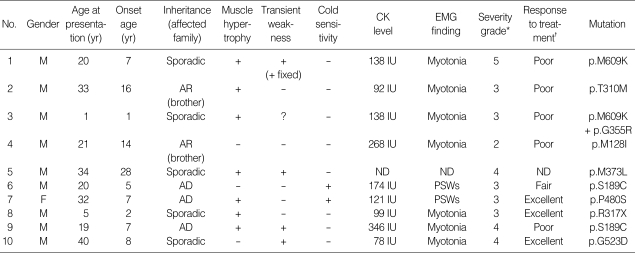Table 2.
Clinical features of the patients with CLCN1 mutation
*Severity of myotonia congenita was graded as follows; (1) no symptoms, but unequivocal myotonia at examination, (2) mild (and/or fluctuating) symptoms, (3) pronounced myotonia, but no transient weakness, (4) pronounced myotonia with transient weakness,but without dystrophic features, and (5) pronounced myotonia, transient weakness, and dystrophic features (Colding-Jørgensen, 2005); †Response to treatment was judged as follows: excellent; complete or near-complete abolition of symptom, good; >70% reduction of frequency and duration of myotonic stiffness, fair; <70% and >30% reduction of frequency and duration of myotonic stiffness, poor; <30% reduction of frequency and duration of myotonic stiffness.
M, male; F, female; AR, autosomal recessive; AD, autosomal dominant; IU, international unit; ND, not done; PSWs, showers of positive sharp waves with or without complex repetitive discharges.

